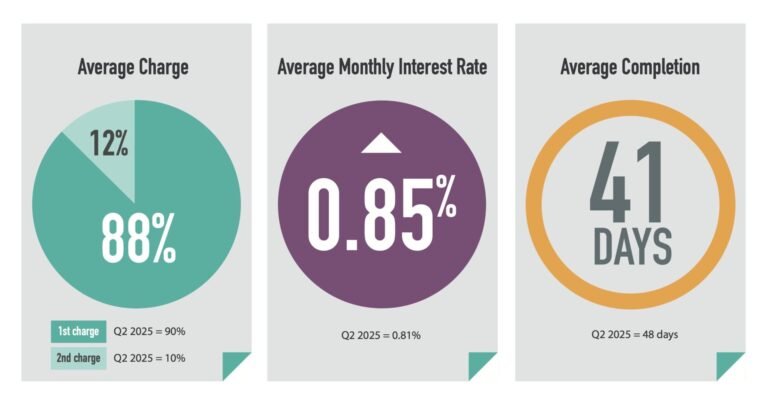Demand for bridging finance rose in Q3 2025 as borrowers prioritised speed and flexibility in response to a slower property market and uncertainty surrounding the upcoming Autumn Budget.
The latest Bridging Trends data shows contributor gross lending reached £209.4m in the quarter, up 4.9% from £199.7m in Q2.
This marks the highest quarterly figure since Q3 2024’s £220.8m, reversing a year-long decline in lending volumes.
Funding investment property purchases was the main driver of activity, accounting for 20% of transactions compared with 16% in Q2.
Industry analysts suggest speculation over potential changes to Stamp Duty encouraged landlords to act quickly, leading to an average completion time of just 41 days, down from 48 days in the previous quarter.
Re-bridging also saw notable growth, rising from 7% of all transactions in Q2 to 12% in Q3. This trend reflects a slower resale market, with borrowers extending loans as properties take longer to sell. The shift contributed to a modest increase in the average monthly interest rate, which climbed from 0.81% to 0.85%.
Meanwhile, the use of bridging loans for refinancing fell sharply. Regulated refinance dropped from 18% to 12%, while unregulated refinance almost halved from 11% to 6%.
Analysts point to stable interest rates and expectations of further base rate cuts as reasons some borrowers are delaying refinancing decisions.
Despite stronger investment activity, unregulated bridging dipped slightly from 55% to 54% of all lending, with Knowledge Bank data showing regulated bridging as the top broker criteria search in Q3.
The proportion of second charge bridging loans increased marginally from 10% to 12%, and average loan-to-value rose from 54% to 55%, with average loan terms remaining steady at 12 months.
William Lloyd-Hayward, group COO and managing director at Sirius Finance, said: “This latest Bridging Trends data is a great example of the versatility of bridging finance, regardless of the broader property market conditions.
“The significant increase in re-bridging shows how borrowers are turning to short-term finance to maintain liquidity in a slower sales environment.
“At the same time, the growth in transactions funding investment purchases shows that investors are spotting value in the current market and using bridging as a means of moving quickly on opportunities.”
Raphael Benggio, bridging director at MT Finance, added: “Considering the uncertainty that the market is going through, including whether base rate will come down any further and waiting for the Budget outcome, it’s clear that bridging finance remains an important tool for borrowers looking for specialist finance.
“It is great to see lenders servicing clients quickly and that the average completion time has fallen by a week.”
Bridging Trends combines data from leading specialist finance packagers, including AFIG, Brightstar Financial, Capital B, Clever Lending, Clifton Private Finance, Complete FS, Enness, Impact Specialist Finance, LDNfinance, Optimum Commercial, Sirius Finance and UK Property Finance. Broker search data is provided by Knowledge Bank.




